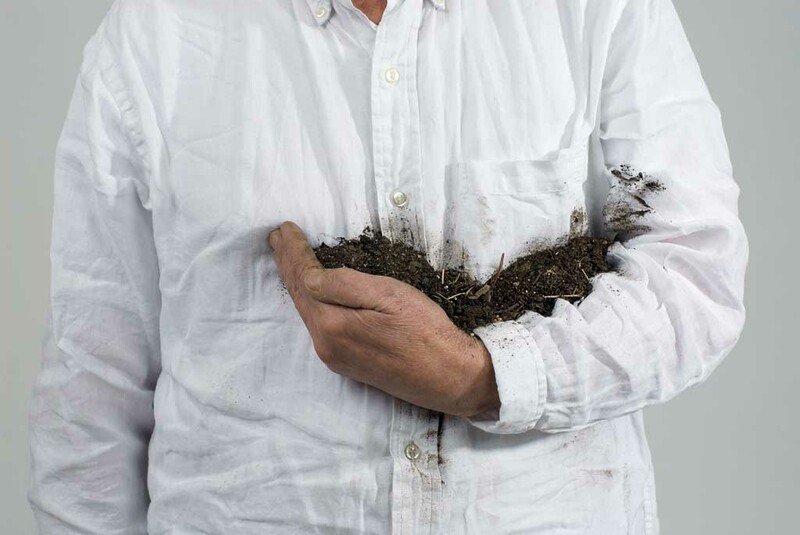- 04.0Cover
- 04.1Holding the EarthLois Weinberger
- 04.2How to Read this Broadsheet
- 04.3Still Running WaterGenevieve Robertson
- 04.4Energy SeriesLaurel Albina
- 04.5Embracing an interdisciplinary approach to plastics pollution awareness and actionSynthetic Collective
- 04.6Antarctica: a Chromatic ParadoxSkye Morét
- 04.7Gas StationRuth Beer
- 04.8The State of EnergyJessica Caporusso
- 04.9Observing our Changing Atmosphere from the Northern Edge of the Canadian ArcticDan Weaver
- 04.10Shorelines and other imagined spacesAlison Cooley
- 04.11What is Innovation?D.T. Cochrane
- 04.12Just VerticalFraser McCallum
- 04.13Local Useful Knowledge: Resources, Research, Initiatives
- 04.14Glossary
Holding the Earth
- Lois Weinberger

Over six years, Lois Weinberger excavated hundreds of everyday objects from his parents’ centuries-old farmhouse in Austria. These objects span 700 years of local history: animal skeletons, coins, cutlery, fabric, foodstuffs, nails, newspapers, tools, pottery, an intact egg with slight cracks. Entitled Debris Field, Weinberger’s archaeological dig into the history of his family, culture, and region marks how industrialization did—and didn’t—affect peasant lives in rural Austria.
Weinberger’s arm limply and ambivalently holds a mass of Earth, staining his white shirt. Soil holds histories: It’s the medium in which archaeology finds objects worth keeping. But as a medium, it’s the excessive matter discarded in the process of looking and finding. Holding soil from his parents’ house, Weinberger shifts focus from objects found in the soil, to the soil itself.
Weinberger’s hold acknowledges the complex histories tied to one’s family and birthplace. His hold is inflected by race and gender: We don’t often see white men photographed as caring or tender. But his hold doesn’t invert this relationship—it complicates it. A hold is an em/brace: sometimes tender, sometimes forceful. Weinberger’s hold is both, and the earth held in the crook of his arm mediates legacies of capitalism and colonialism. The gesture of care shown here is a messy one, enmeshed in how soil bespeaks environmental violence: compacted soils need enrichment; toxified soils need remediation; stolen soils need rematriation.
See Connections ⤴